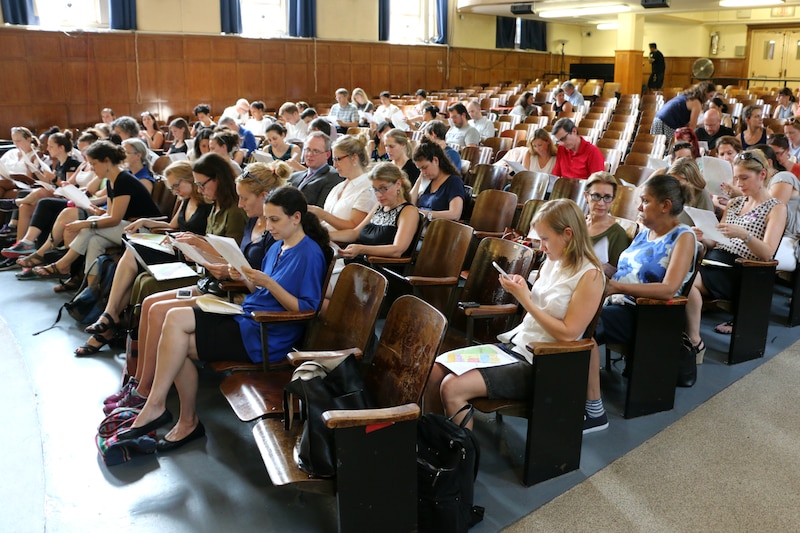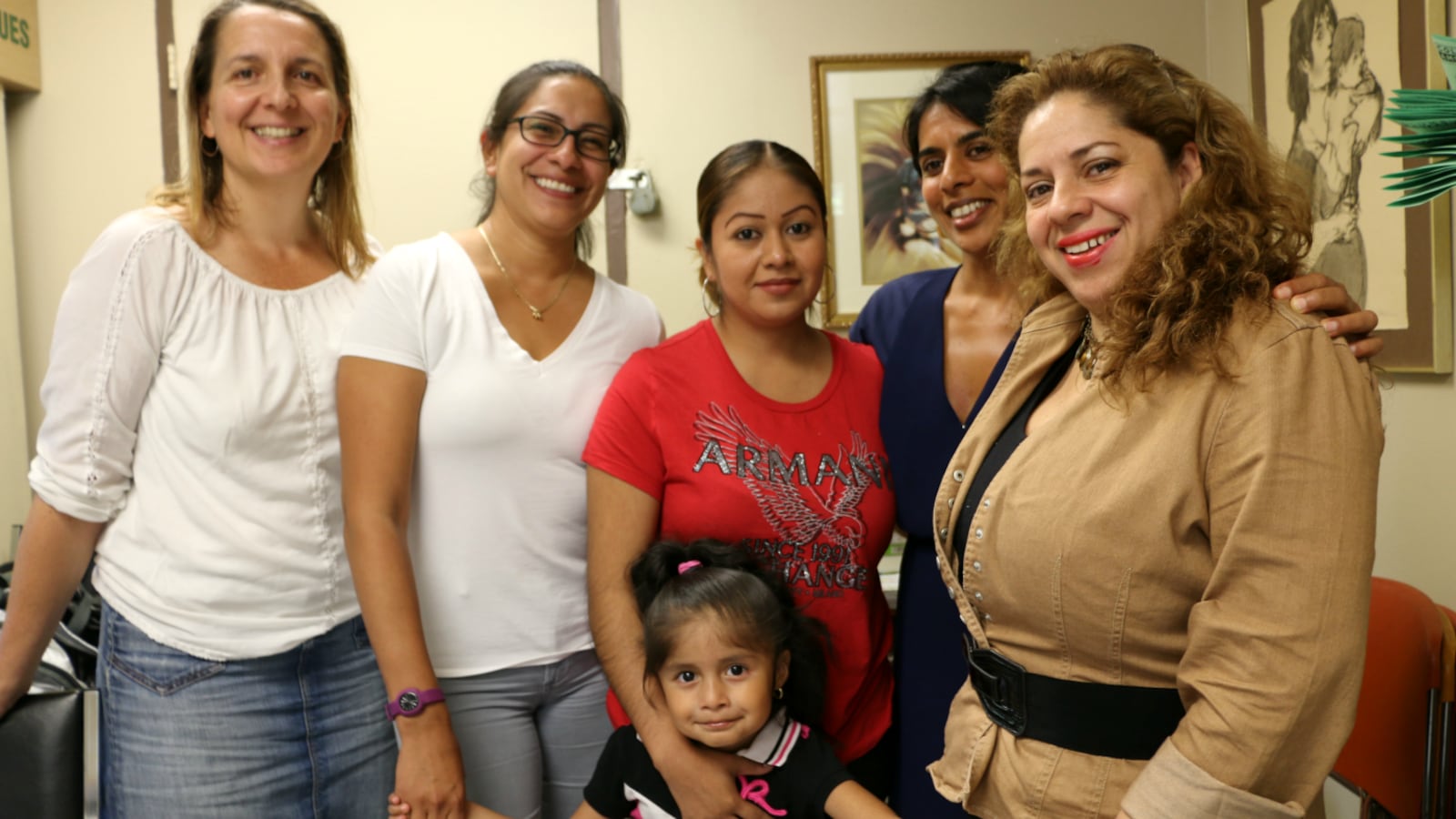Hand after hand shot up last week inside a sweltering auditorium on the Upper West Side.
They belonged to dozens of parents who had come to grill an education department official about the city’s contentious plans to rezone two sought-after schools, P.S. 199 and P.S. 452. Many parents fiercely oppose the plans, which would draw more low-income students into the disproportionately white and affluent schools.
The parents at the meeting, who were almost all white, asked technical questions about how the city came up with its enrollment projections and whether an oversight panel could still reject the city’s proposed “scenarios.” But when the microphone was passed to a woman sitting off to the side, she tried to steer the conversation to a larger issue.
“I wonder if you would speak to what either of the scenarios would do to address the situation of segregation in the entire district?” asked Ujju Aggarwal, an organizer with the District 3 Equity in Education Task Force.
Advocates like Aggarwal have spent over a decade pointing out the sharp race and class imbalances among the schools in Manhattan’s District 3, which spans from West 59th Street to 122nd. They have repeatedly called for a district-wide desegregation plan during that time, without much luck.
But with city officials paying new attention to school segregation and the proposed zone changes highlighting the district’s deep divides, advocates have seized on the moment to renew their desegregation drive. At the same time, they are trying to amplify the voices of low-income black and Hispanic parents, who are a majority in the district but have been overshadowed by parents opposed to the rezonings.
“We only hear one side all the time,” said Marilyn Barnwell, a member of the equity task force. “But there are more of us who are concerned.”
P.S. 199 and P.S. 452 epitomize the district’s imbalances: While about half the district’s students come from low-income families, less than 10 percent of students do at those two schools. And only 20 percent or less of their students are black or Hispanic, even though those groups account for more than half of the district’s students.

Dozens of P.S. 452 parents have flocked to meetings to publicly denounce the plan for that school, which would involve moving it into a building a mile south that sits across from a public-housing development. Behind the scenes, some parents distributed anonymous surveys and talking points against the plan.
Last fall, many parents rallied against the city’s plan to shift some families from the P.S. 199’s zone into that of P.S. 191, a lower-performing school nearby that serves many students who live in public housing. In both cases, parents said they welcomed greater school diversity even as they opposed plans that could achieve it.
But advocates say the rezoning battles have given the false impression that most district parents prefer the status quo over integration. They say many families are dismayed by the district’s disparities, and believe that desegregation would help equalize resources and ease the burden on schools that serve an outsize share of high-needs students.
They also feel that diversity is a crucial part of children’s education.
“I want her to learn how to communicate with other people and have respect for people,” said Mariela Angulo, a Venezuelan immigrant whose daughter will soon begin pre-kindergarten. “I don’t want her with [just] one kind of people and one kind of group.”
Angulo is a member of the Parent Leadership Project, a District 3-based advocacy group that grew out of the now-defunct Center for Immigrant Families and whose members co-founded the District 3 Equity in Education Task Force. As far back as the early 2000s, those advocates have lobbied for “controlled choice,” a desegregation plan that would erase the district’s zones and assign students to schools based on their preferences and their demographics. The goal is to break up the clustering of affluent students at some schools, and high-needs students at others.
Task force members and their allies on the district’s community education council have repeatedly floated controlled choice as an alternative to the city’s proposed rezonings. The council, which must approve any zone changes, hosted two public forums this year to discuss controlled choice, but it has not endorsed the idea.
In contrast to the rezoning opponents, only a scattering of parents have attended the council’s meetings to call for controlled choice. Advocates say some parents feel excluded by the meetings, which are mostly conducted in English and sometimes held during the workday. Flor Donoso, a task force member who has three children in District 3 schools, said a council member asked her at one meeting why more parents from her group hadn’t shown up.
“I was a little offended, because you’re talking about 9 o’clock in the morning,” she said. “Parents are working.”
Joe Fiordaliso, a P.S. 199 parent and the district’s education-council president, said the council had “bent over backwards” to make its meetings accessible to all parents by holding them at different times and locations, and had provided Spanish-language translation at the controlled-choice forums. He also formed a committee to look at diversity and inequity in the district and propose solutions, he noted.
While advocates say a silent army of parents supports district-wide desegregation, Fiordaliso and others are not convinced. Saying that a move to controlled choice would pose a number of logistical challenges without any guarantee of improving school quality across the district, he argued that few parents actually support it.
“The fact that those alternative ideas aren’t resonating isn’t my fault,” he said. “Maybe it’s because those ideas don’t make any sense or they’re so radical and unproven that they’re not accepted by the community.”
Partly because of such skepticism, some local advocates have started to look beyond the council for new ways to promote district-wide integration.
Emmaia Gelman, a District 3 parent and equity task force member, said she was upset that a “tiny subset of parents” who opposed the rezonings seemed to dominate many of the council meetings, drowning out the larger conversation about segregation across the district. So this spring she joined with a few other parents to help form a new organizing group, Public School Parents for Equity and Desegregation.
The group’s goal is to spark conversations among parents, particularly ones who have been under-represented at council meetings. They plan to bring up issues like disparities in parent fundraising and classroom materials that don’t reflect students from diverse backgrounds. But their main focus will be on integration.
“There’s a missing piece of this narrative,” said co-founder Toni Smith-Thompson, “which is parents speaking about the benefits of integration for all kids.”

